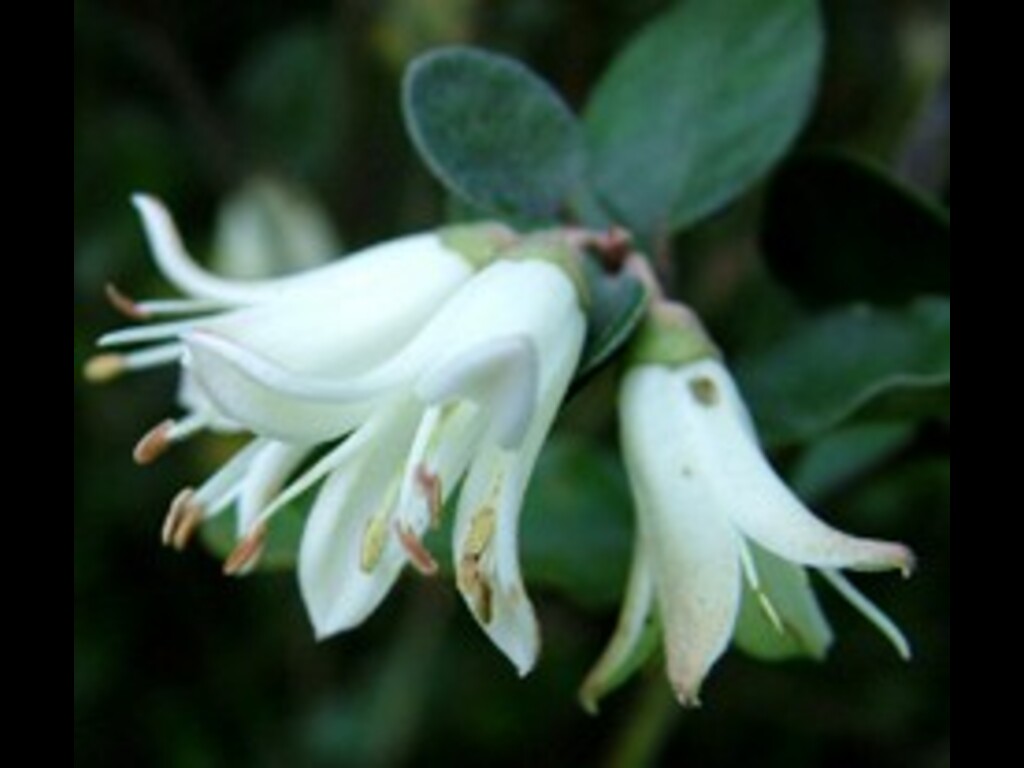Correa 'Vanilla Cream'
- File Number
- 1297
- ACRA Field Book Number
- 1297
- Registration Date
- 29/01/2010
- Application Received
- 12/06/2009
- Family
- Rutaceae
- Cultivar Name
- Correa 'Vanilla Cream'
- Origin
- Origin unknown. Purchased as C. alba var alba and grown for some years by John and Barbara Nevin of Armidale NSW. Named and registered with ACRA by Maria Hitchcock for the Correa Study Group.
- Characteristics
- Upright dense shrub growing to 1.5 m high by 1 m wide. The plant has long ascendant stems, particularly on the outside of the bush. Leaves are ovate to elliptical in shape with undulating margins and obtuse tips, 35 mm x 22 mm in size, dark green, glabrous and leathery on top, pale green and velvety underneath with scattered rust coloured stellate hairs concentrated on the midvein. Petioles are 3 mm long. Flowers occur either singly or in small clusters at the ends of lateral branchlets. Corolla is creamy white in colour, 20 mm long x 8 mm wide before splitting. Petal tips have a light dusting of tan coloured stellate hairs and are strongly splayed outwards. Stamens are made up of tan coloured anthers on white filaments, slightly longer than the petals and splayed outwards in the petal splits. Calyx is green, square in cross section, with four shallow lobes, the points occurring where the petals are fused in the corolla. The pedicel is 5 mm long. Peak flowering occurs in Autumn and Winter. Diagnosis: This cultivar appears to be a C. alba x backhouseana hybrid. The flowers of C. alba x backhouseana from Boat Harbour in Tasmania are larger and they have a darker concentration of tan coloured stellate hairs on the tips. The flowers of C. ‘Dusty Bells’ are strongly covered in tan coloured stellate hairs giving them a much darker appearance. The typical C. alba var alba corolla splits to the calyx and the petals are strongly splayed outwards exposing the nectary in the base of the flower.
- Cultivation
- This cultivar appears to be both frost and drought hardy. It has been grown in a built-up garden bed which allows for good drainage on basalt soil. The plant requires very little maintenance, is pest free and develops a compact shape. Some pruning may be required to maintain density. It is highly floriferous.
- Publication
- Hitchcock, M. (2010), Correas: Australian Plants for Waterwise Gardens: 67 (photo)
- Colour Coding
- RHS Colour Chart 1995: Flowers: Corolla: 155A Mature leaves: Upper lamina 137C .
- Propagation
- Cuttings from semi-firm new growth
- Applicant Name
- Maria Hitchcock for the Correa Study Group.
- Uses
- Should adapt to most garden conditions and could also be grown in a tub.
- Availability
- ANPSA Correa Study Group
- ANBG Accession Numbers
- -
- NSL ID
- -

